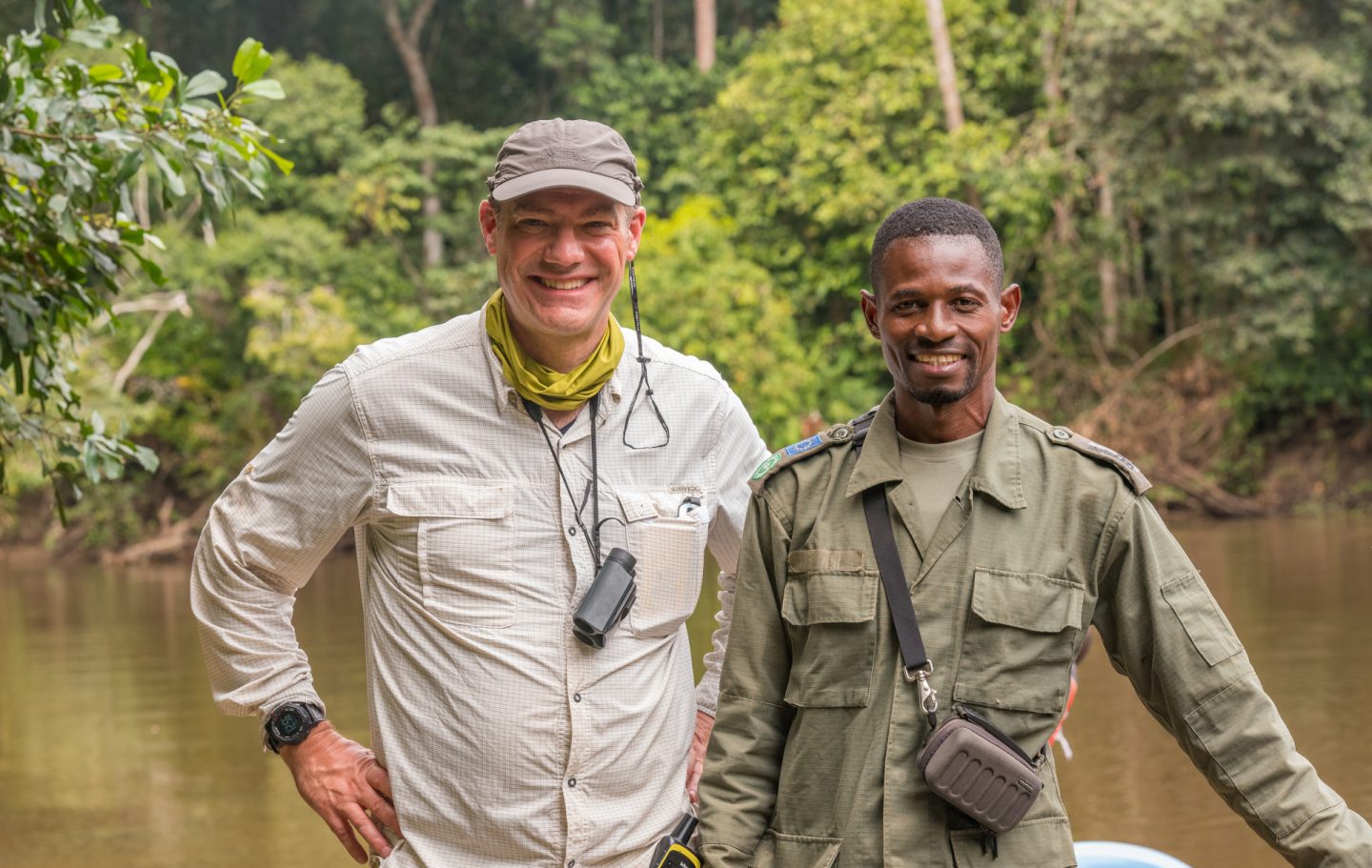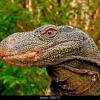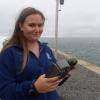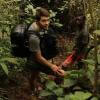Camera traps have been a key part of the conservation toolkit for decades. Remotely triggered video or still cameras allow researchers and managers to monitor cryptic species, survey populations, and support enforcement responses by documenting illegal activities. Increasingly, machine learning is being implemented to automate the processing of data generated by camera traps.
A recent study published showed that, despite being well-established and widely used tools in conservation, progress in the development of camera traps has plateaued since the emergence of the modern model in the mid-2000s, leaving users struggling with many of the same issues they faced a decade ago. That manufacturer ratings have not improved over time, despite technological advancements, demonstrates the need for a new generation of innovative conservation camera traps. Join this group and explore existing efforts, established needs, and what next-generation camera traps might look like - including the integration of AI for data processing through initiatives like Wildlife Insights and Wild Me.
Group Highlights:
Our past Tech Tutors seasons featured multiple episodes for experienced and new camera trappers. How Do I Repair My Camera Traps? featured WILDLABS members Laure Joanny, Alistair Stewart, and Rob Appleby and featured many troubleshooting and DIY resources for common issues.
For camera trap users looking to incorporate machine learning into the data analysis process, Sara Beery's How do I get started using machine learning for my camera traps? is an incredible resource discussing the user-friendly tool MegaDetector.
And for those who are new to camera trapping, Marcella Kelly's How do I choose the right camera trap(s) based on interests, goals, and species? will help you make important decisions based on factors like species, environment, power, durability, and more.
Finally, for an in-depth conversation on camera trap hardware and software, check out the Camera Traps Virtual Meetup featuring Sara Beery, Roland Kays, and Sam Seccombe.
And while you're here, be sure to stop by the camera trap community's collaborative troubleshooting data bank, where we're compiling common problems with the goal of creating a consistent place to exchange tips and tricks!
Header photo: ACEAA-Conservacion Amazonica
Ol Pejeta Conservancy partners with conservation and technology organisations to kick-start a research and innovation centre for wildlife conservation
31 May 2019
In this blog, Laure Joanny adds her perspectives to an ongoing discussion that we've been seeing in the community about conservation tech and it's relationship to e-waste. How do we tackle the challenge of battery waste...
3 May 2019
Happy World Wildlife Day! To celebrate, this week we've asked our community to share photos showing how they are using tech in the field or the lab, using the #Tech4Wildlife hashtag.
3 March 2019
Arribada recently returned from field sites in Assam, India where they tested the image quality and detection abilities of low-cost thermal sensors for detecting elephants in conflict areas. Arribada is working on these...
1 March 2019
In this case study, Science Reporter Jamie Morton tells the story of how Kiwi scientists are teaming up with a local underwater robotics company to gain world-first insights into the lives of whales in Antarctica.
4 February 2019
Although invaluable for conservation and ecological research, camera traps frequently take pictures of people as well as wildlife. This has important implications for privacy and human rights and may ultimately...
22 November 2018
A team of Brazilian biologists supported by the Conservation Leadership Programme (CLP) is unlocking the secrets of one of the world’s most fragile and threatened biodiversity hotspots thanks to the success of a...
22 November 2018
A comprehensive aerial survey of whales and dolphins off the coast of South Africa supported by a range of organisations including Fauna & Flora International (FFI) has recorded an astounding 1,106 southern right...
22 November 2018
Ted Schmitt joined us for a lunchtime lecture in which he shared his experiences working across Africa the past five years with protected area managers, anti-trafficking organisations, and scientists to effectively...
22 November 2018
In this case study, WILDLABS member Sol Milne takes us through his Ph.D. work investigating how changing land-use is affecting orangutan distribution in Sabah, Malaysian Borneo. With the help of five local research...
22 October 2018
Machine learning is widely recognized as the solution to camera trap data processing, but a user-friendly and broadly-accessible system for putting this tech to use has not yet been developed. In this case study,...
1 October 2018
Motion-sensing wildlife-tracking cameras in South Sudan have captured 425,000 photos, documenting species not previously known to be found in this richly forested area. The team is now asking for your help to identify ...
22 August 2018
May 2024
event
October 2024
December 2023
event
November 2023
event
Alternative to Reconyx Ultrafire
8 November 2023 9:07am
Ideas for easy/fast maintenance of arboreal camera traps
30 August 2023 8:51pm
15 November 2023 9:04pm
I use the same wifi trick with Reolink solar cameras looking at tree cavities (Austrian mountain forest). You can even put the mobile router on drone to get connection to the cameras.
16 November 2023 10:29pm
Yup Reolink is awesome! I've had a few cameras die on me, but hopefully I can get them repaired.
17 November 2023 9:19am
Hi Ben,
I would be interested to see if the Instant Detect 2.0 camera system might be useful for this.
The cameras can transmit thumbnails of the captured images using LoRa radio to a Base Station. You could then see all the captured images at this Base Station, as well as the camera's battery and memory information (device health). In addition, you could also change camera settings from the Base Station so you would not need to reclimb the trees to change from PIR sensitivity high to medium for instance.
The Instant Detect 2.0 cameras also have an external power port so a cable could be run to the ground to a DC 12V battery for long term power.
If you wanted to, you could also connect the Base Station to the Cloud using satellite connectivity, so that you can monitor the whole system remotely, but this will incur more cost and power usage of the Base Station.
I'd be keen to hear your thoughts,
Thanks,
Sam
Instant Detect 2.0 and related cost
16 November 2023 12:50am
16 November 2023 10:55am
Hi Kaarthika, hi all,
ZSL's Instant Detect 2.0 is currently undergoing Beta testing with external partners and so is still pre-production. We therefore do not have final pricing for the system.
Saying this, we have got a manufacturing partner fully set-up who has already completed two full build rounds of the system, one in 2020 and another in 2023. This means we actually have a very good idea of the system's build costs and what these are likely to be when we can manufacture the system in volume.
While I cannot release this pricing yet, I am confident that we will have an unparalleled proposition.
In particular, the satellite airtime package we can supply to conservationists due to the generosity of the Iridium Satellite Company means that each system can send 3,600 (25-50KB) images a month from anywhere in the world for a single fixed fee. This equates to around a 97% discount to the normal commercial rates.
We are currently very busy fundraising so that we can make this final step to scale the system.
If we can secure this funding, we hope to go into volume production by mid-2024.
Best wishes,
Sam
16 November 2023 2:12pm
Thank You for your valuable update Sam
16 November 2023 2:30pm
Hello Sam,
What would you say would be the estimate cost was for the first version Instant Detect 1.0 ? That might help my research ?
Research/Field Technician - SPEC Lab Ocelot Research Program
16 November 2023 1:58pm
Insight; a secure online platform designed for sharing experiences of conservation tool use.
7 November 2023 1:01pm
A secure platform designed for those working to monitor & protect natural resources. Insight facilitates sharing experience, knowledge & tools to increase efficiency & effectiveness in conservation. By sharing we reduce time & money spent to find, test, & implement solutions.
DeepFaune: a software for AI-based identification of mammals in camera-trap pictures and videos
14 July 2023 3:14pm
24 October 2023 8:46pm
Hello to all, new to this group. This is very exciting technology. can it work for ID of individual animals? we are interested in Ai for identifying individual jaguars (spots) and andean Bears (face characteristics). Any recommendation? contact? thanks!
German
25 October 2023 8:57am
That's a very interesting question and use case (I'm not from deepfaune). I'm playing with this at the moment and intend to integrate it into my other security software that can capture and send video alerts. I should have this working within a few weeks I think.
The structure of that software is that it is two stage, the first stage identifies that there is an animal and it's bounding box and then there's a classification stage. I intend to merge the two stages so that it behaves like a yolo model so that the output is bounding boxes as well as what type of animal it is.
However, my security software can cascade models. So if you were able to train a single stage classifier that identifies your particular bears, then you could cascade all of these models in my software to generate an alert with a video saying which bear it was.
4 November 2023 4:51am
Hi @GermanFore ,
I work with the BearID Project on individual identification of brown bears from faces. More recently we worked on face detection across all bear species and ran some tests with identifying Andean bears. You can find details in the paper I linked below. We plan to do more work with Andean bears in 2024.
I would love to connect with you. I'll send you a message with my email address.
Regards,
Ed
Nepal's tiger conservation gets tech boost with AI-powered deer tracking
30 October 2023 1:23pm
Researchers in Nepal are using vertical cameras and AI technology to track and profile individual spotted deer (Axis axis), similar to the methods used for tigers.
Modifying GoPro cameras to be IR sensitive.
25 October 2023 6:38pm
27 October 2023 6:35am
Hi Jay!
Thanks for posting this here as well as your great presentation in the Variety Hour the other day!
Cheers!
5 Trailblazing Wildlife Monitoring Tech Solutions across East Africa. What Monitoring Technologies are you using?
25 October 2023 12:40pm
Metadata standards for Automated Insect Camera Traps
24 November 2022 9:49am
2 December 2022 3:58pm
Yes. I think this is really the way to go!
6 July 2023 4:48am
Here is another metadata initiative to be aware of. OGC has been developing a standard for describing training datasets for AI/ML image recognition and labeling. The review phase is over and it will become a new standard in the next few weeks. We should consider its adoption when we develop our own training image collections.
24 October 2023 9:12am
For anyone interested: the GBIF guide Best Practices for Managing and Publishing Camera Trap Data is still open for review and feedback until next week. More info can be found in their news post.
Best,
Max
Trail cam recommendations for capturing small, quick mammals at night?
16 October 2023 12:01am
20 October 2023 3:24pm
Hi @MaddievdW have you considered using a 'tunnel' to help, well, funnel, small critters into a space with a camera that makes it a bit easier for detections? A few years back, we made a PVC pipe tunnel with a protected food lure that seemed to work well with even cheapy trail cameras (and in fact, we ended up having to block some of the IR illumination using a few layers of athletic tape over the LED array). Here's a rather blurry image of a bandicoot we got: 
And another of an antechinus:

We weren't that concerned with image quality, as we were actually testing an RFID logger in the tunnel also, and simply wanted to know if we got critters with no tags and what species (if possible). So one thing I'd definitely consider if you go down this path is focal length of the camera. Here's a previous discussion on a similar idea:
I guess you could always 'calibrate' it to a certain extent by just using a longer section of pipe. Here's what our set up looked like, but again, we had the RFID logger, so a camera-only version would be a bit simpler - the camera and battery was in the screw top section on the left-hand-side of the tunnel image and each entrance had RFID antennas linked backed to a logger in the same compartment as the camera:

All the best for your research,
Rob
20 October 2023 5:06pm
Addressing each of the questions/issues posed:
Triggering Camera:
If you are getting triggers, but empty frames, during known visits by these lickety-split animals, the issue is the trigger speed. Looking at the Browning selection guide, for example, https://browningtrailcameras.zendesk.com/hc/en-us/article_attachments/12697703673243
I see that the Elite-HP5 models have a 100 ms advertised min trigger speed, which is slightly (50 ms) than the Dark Ops Pro DCL. This is equivalent to 2 earlier frames (at 60 FPS video), which could be significant with fast moving targets.
I have found, BTW, counterintuitively, that for Browning SpecOps and ReconForce models (Elite-HP5) that camera gets to first frame sooner when taking videos vs. when taking stills. I don’t understand this completely, but it’s a thing.
If you are not getting any triggers, then the PIR sensor is somehow missing the target. Make sure you understand the “detection zones” supported by your camera. These are not published, but can be determined with some patience and readily available “equipment” – see my post on “Trail Camera Detection Zones” at https://winterberrywildlife.ouroneacrefarm.com/2022/08/01/deep-tech-trail-camera-detection-zones/
Putting more than one camera at a site may also increase the probability that at least one triggers (and may improve lighting, see below)
If you’re consistently missing triggers, you may have to consider a non-PIR sensor. Unfortunately, this removes you from the domain of commercial trail cameras. Cognisys makes a number of “active” sensors based on “break beam” and (now) lidar for use with DSLR-based camera traps. You would also have to come up with your own no-glow lighting source, and hack the DLSR camera to remove the (built-onto-the sensor) IR filter. In our experience, these sets are 10x more expensive and time consuming vs. commercial trail camera sets, and are only justified by the potential for (a few) superior images.
The species-specific triggers and sets mentioned on this thread seem like a better option.
Avoiding daytime false triggers: All the commercial trail cameras I’m aware of have a single type of trigger sensor. It is based on a Passive InfraRed (PIR) sensor and Fresnel lens. Apps, Weldon and McNutt cover this admirably in Peter Apps, John Weldon McNutt, “How camera traps work and how to work them,” African Journal of Ecology, 2018.
These sensors trigger on changes in certain areas of the thermal field – in practice a combination of a heat and motion in one or more detection zones. They are not decomposable.
Some cameras (e.g. Browning SpecOps, and maybe the Dark Ops Pro?) allow you to set hours of operation so that the camera only triggers at night, for example. This would cause you to (for sure) miss “off hours” appearances by your target species, but would avoid daytime false triggers.
No Glow Image Quality: The good news about longer wavelength “No-Glow” flashes is that animals are less sensitive to them. The bad news is that the CMOS image sensors used by cameras are also less sensitive to the longer IR. Less signal leads to lower quality images. Others have mentioned adding supplemental no-glow illumination. An easy way to do this would be to set up two cameras at each of your sites. When they are both triggered, each will “see” twice as much illumination, and image quality will be improved. Browning SpecOps models (at least) have dynamic exposure control on video which allows this scheme to work (with only a frame or two of washout) while the algorithm adjusts exposure). For an example of this effect, see opening porcupine sequence in our video at https://www.youtube.com/watch?v=itx7KnlxKS4
21 October 2023 12:52am
Hi Maddie,
This camera has a very quick reaction time.
Shedding light on nocturnal behavior: A cost-effective solution for remote, infrared video recording in the field
20 October 2023 12:31pm
Do you or someone you love study nocturnal animals? Do you want to film behavior in infrared, but NOT spend $1k on a camera (that will die in the field anyways)? Is short battery life a constant battle? Here, this preprint will help!
To find out more, come to Variety Hour!
Correspondence among multiple methods provides confidence when measuring marine protected area effects for species and assemblages
20 October 2023 12:28pm
When considering MPA groundfish monitoring methods: the more, the merrier! New paper out in Journal of Applied Ecology compared three MPA monitoring techniques commonly utilised to survey groundfish populations. They found that using multiple methods was the best approach.
Catch up with The Variety Hour: October 2023
19 October 2023 11:59am
GEO BON Monitoring Biodiversity for Action
5 October 2023 3:10pm
Good Thermal/ Night Vision Cameras?
1 September 2023 7:15pm
14 September 2023 1:31pm
@LucyHReaserRe At this area in the past, we have tried using a normal trail IR camera, but with very limited sensitivity. I have thought about adding the IR fog lights out there to help, but was leaning towards the thermal cameras to allow for more types of data to be taken from the images in the future i.e. age class based on heat signatures.
Thank you all for providing input, I will look into each of these ideas!
22 September 2023 11:13am
I'm jupping into the discussion, with a similar objective. I'm looking for a thermal camera trap, (I know cacophony). it would be use to improve invasive speices monitoring especially for rats and feral cats.
Any idea?
Thanks
22 September 2023 12:56pm
Hi @mguins , as @kimhendrikse mentioned resolution (and also brand) for thermal cameras can dictate a big jump in price. GroupGets has a budget Lepton (FS - short for 'factory second' I think) if you wanted to check one out:
They also have a bunch of other Flir products and boards for interfacing with Leptons etc., so worth a browse of the shop. It could also be worth taking a look at Seek modules, some of which @Alasdair has experience with : (e.g.
They also have modules you can connect to a mobile phone:
@TopBloke I'd be very keen to see your Lepton camera trap too!
Cheers,
Rob
Turn old smartphone into IA camera trap?
24 September 2021 1:08pm
11 July 2023 10:56am
Any news regarding this topic ?
14 July 2023 4:05pm
Despite the power challenges noted in this thread, I think the “used” stream of smart phones is a viable platform for trail cameras. Having successfully hacked in custom features into closed source trail camera firmware (https://github.com/robertzak133/unified-btc-reverse) , I am also hoping that software development on smart phones is a better way to do feature innovation on trail cameras.
I have just “started” on a trail cam app for iPhone 12 pro (not that “old” yet, but it will be by the time I’m done, and it’s the first iPhone with LIDAR). I have done some toy apps on the iPhone before, but am mostly blissfully unaware of how much work this will be :) None-the-less, goal is to have a prototype working in the back yard by July 15, 2024. I’ll post a project link on this thread as soon as it’s up.
I’m just working on requirements now. My primary focus is on improving image quality, and capture efficiency vs. existing trail cameras for wildlife photography. For example:
- Using camera image quality library to improve low light captures, exposure, etc.
- Improving trigger versatility and accuracy using LIDAR sensor
- Tracking auto-focus based on LIDAR
- Negative trigger delay for daylight shots
- Support for custom lighting via “ensemble” sets
It seems wrong not to leverage cellular connectivity, though this is a lower priority for me because most of our sets are beyond cell phone coverage.
I did find an interesting app – “Motion Detector Camera” by Phil Bailey https://apps.apple.com/us/app/motion-detector-cam/id461753935 this app uses some parameterizable motion detection algorithm to trigger still images (free version). It’s pretty slick. I’m starting w/ LIDAR because I want to have a trigger that works in the dark.
Note that none of these require any AI processing of the images, though I have no doubt a smart phone would be a great place to do that one way or another. Do you have specific usage models/requirements in mind for in-phone image processing/classification?
22 September 2023 11:30am
Keep us in touch looks promissing!
Q&A: UK NERC £3.6m AI (image) for Biodiversity Funding Call - ask your questions here
13 September 2023 4:10pm
21 September 2023 4:27pm
This is super cool! Me and @Hubertszcz and @briannajohns and several others are all working towards some big biodiversity monitoring projects for a large conservation project here in panama. The conservation project is happening already, but hubert starts on the ground work in January and im working on a V3 of our open source automated insect monitoring box to have ready for him by then.
I guess my main question would be if this funding call is appropriate/interested for this type of project? and what types of assistance are possible through this type of funding (researchers? design time? materials? laboratory field construction)
Camera Trap Data Management Survey: Results
20 September 2023 1:46am
Camera traps statistics
18 September 2023 10:22am
GBIF guide to managing and publishing camera trap data opens for community review
15 September 2023 2:23pm
A low-cost, long-running, open-source stereo camera for tracking aquatic species and their behaviours
5 September 2023 12:15pm
Have you ever wanted to continuously film underwater species and their behaviours for up to 2 days at a low cost?
Well now you can with this new open-source design guide published in
@MethodsEcolEvol!
https://besjournals.onlinelibrary.wiley.com/doi/full/10.1111/2041-210X…
Camera traps reveal wildlifes' responses to megafires in Western U.S.
24 August 2023 10:47pm
An interesting new paper from a camera trap surveying species' responses and resilience to megafires in the western United States. A great example of how conservation tech can help us understand regional climate change impacts.
Online training workshop: camera trap distance sampling, 23-27 October 2023
21 August 2023 2:24am
Bushnell cameras with date-time issues.
29 July 2023 1:06am
11 August 2023 12:40pm
I think this is a known problem with some Bushnell models. The battery connection only needs to be interrupted for an instant (by being moved for example) and the camera resets. If a coin battery, are they still charged?
11 August 2023 1:19pm
I am having similar problems with a campark camera. It's more than 4 years old, so it could be the button cell. I am also suspecting that humidity plays a role : the re-set happened a couple of times after long rain periods ( half a day or so ). Perhaps it was coincidence, perhaps some corrosion is going on.
11 August 2023 2:45pm
Thanks folks. Will go check and let you know what I learn.
Mike
Live Streaming from a Remote Location (no cell tower access)
15 July 2023 1:18am
29 July 2023 1:29am
"The WiFi Solar Camera comes loaded with various features such as live monitoring ( via smartphone app ), motion sensor recording and notification alerts on detected movement, night vision, cloud storage of footage, an audio system to facilitate communication"
29 July 2023 8:43am
Hi Colin, Many thanks for your replies. Yes, Starlink provides full internet access. Our current Wifi Nest camera contains a web server & provides a html code to embed the live stream into a web page for public access. Most security cameras, due to privacy reasons, do not stream to a web page without requiring a username & password. Not a viable solution for public viewing.
We are looking for a camera with PTZ functionality that can stream to a web page without requiring a username & password.
Cheers, Graeme
11 August 2023 12:27pm
Graeme, Maybe speak to a web IT expert. You may be able to have an interface on the webpage which provides the login credentials to the camera, but then passes the image (and control) to another page. Make a "masking" page that keeps the camera happy, but access and control is via another page.
Conservation Technology Specialist
 WCS
WCS
11 August 2023 1:21am
#Tech4Wildlife Photo Challenge: Judges' Panel Honorees
4 August 2023 10:00am
#Tech4Wildlife Photo Challenge: Community Choice Honorees
3 August 2023 10:00am
360 Camera for Marine Monitoring
25 July 2023 8:54am
28 July 2023 7:43pm
Hi Sol,
For my research on fish, I had to put together a low-cost camera that could record video for several weeks. Here is the design I came up with
At the time of the paper, I was able to record video for ~12 hours a day at 10 fps and for up to 14 days. With new SD cards now, it is pushed to 21 days. It costs about 600 USD if you build it yourself. If you don't want to make it yourself, there is a company selling it now, but it is much more expensive. The FOV is 110 degrees, so not the 360 that you need, but I think there are ways to make it work (e.g. with the servo motor).
Happy to chat if you decide to go this route and/or want to brainstorm ideas.
Cheers,
Xavier
3 August 2023 2:32am
Hi Xavier, this is fantastic! Thanks for sharing, the time frame is really impressive and really in line with what we're looking for. I'll send you a message.
Cheers,
Sol
3 August 2023 3:19am
I agree, this would be great for canopy work!











































18 November 2023 8:22pm
The two cameras you mention below tick off most of the items in your requirements list. I think the exception is the “timed start” whereby the camera would “wake up” to arm itself after a certain date. Camlockbox.com provides security boxes for both.
Especially if a white flash is useful in your research, you may also want to consider the GardePro T5WF. I don’t have a lot of long-term experience with this camera, but it is one of the few that offers a white flash, and it has excellent battery life, especially for night captures. The audio can be a little flaky
I have done posts on these cameras, including a teardown. See:
https://winterberrywildlife.ouroneacrefarm.com/2022/04/10/browning-spec-ops-elite-hp5-teardown/
https://winterberrywildlife.ouroneacrefarm.com/2022/09/26/inside-the-bushnell-core-ds-4k-trail-camera/
https://winterberrywildlife.ouroneacrefarm.com/2023/11/18/gardepro-t5wf-white-flash-trail-camera/
I have heard reports that the HP5 can let in moisture in very wet environments. This may be a direct water contact type of thing, as we have never had water issues with this camera when it is installed in a lock box (US Northeast, Northwest).
We prefer the HP5 due to superior image and audio quality. That said, there is a known issue that with some HP5 cameras, with some fast (> 80 MB/s rated read) and large SD cards, the SD card can become corrupted, preventing the camera from capturing images. I address this, including a fix via firmware, in another post:
https://winterberrywildlife.ouroneacrefarm.com/2023/11/16/fixing-browning-edge-elite-hp4-and-hp5-sd-card-corruption/
Hope this helps.
-bob